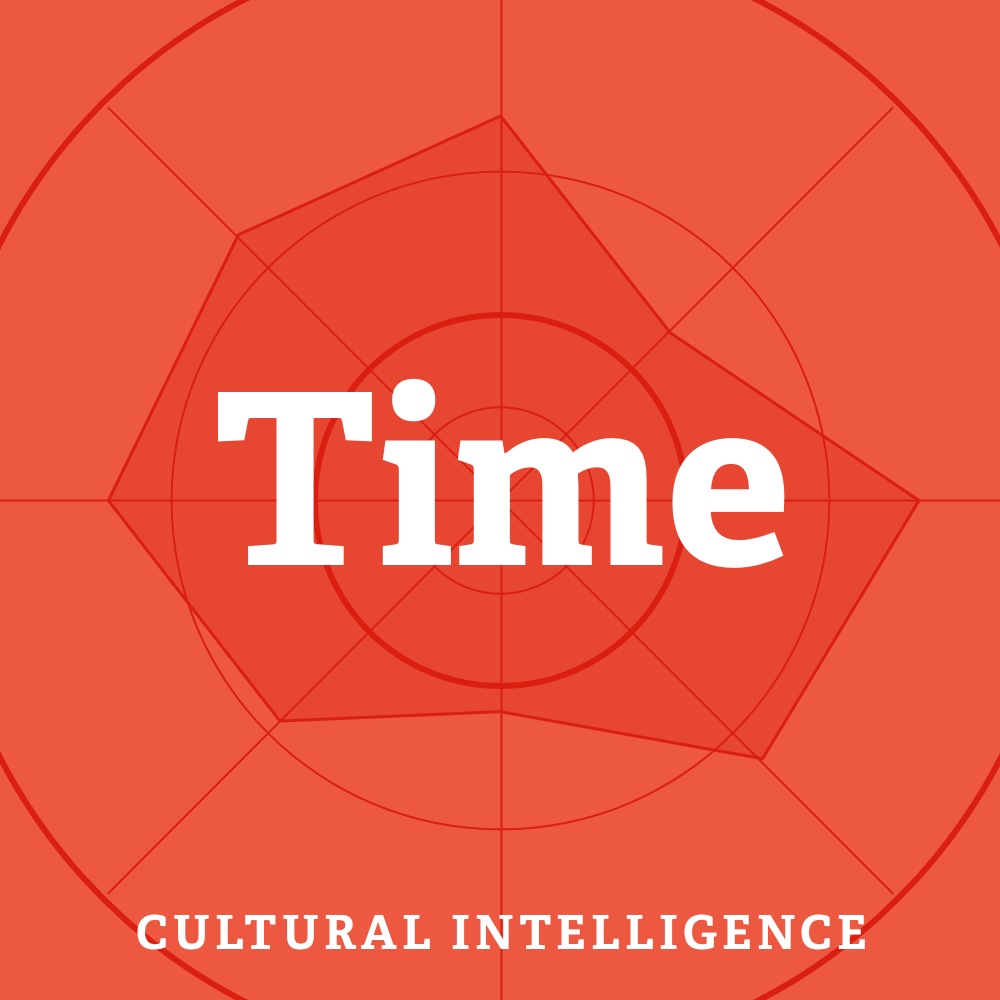The cultural force of “Time” is a one of the most commonly recognized and studied aspect of culture. The fact is all people (and cultures) experience the passing of time, schedules and deadlines, and adopt various ways for dealing with them.
When it comes to culture’s and people’s behavior around Time, differences are particularly noted around the degree to which people adhere to or are flexible around schedules. Attitudes toward Time affect people’s behavior, relationships, getting work done and even people’s view of life.
Cultural anthropologists often look at a culture’s attitudes around Time according to various extremes represented by the continuums below. There are probably many more continuums that could be added, but these here are commonly cited. Scholars may use different terms for these, but the general concepts remain the same.
Various Continuums for TIME
LIMITED LIMITLESS
LINEAR CYCLICAL
POSSESS EXIST WITHIN
MONOCHRONIC POLYCHRONIC
SHORT HORIZON LONG HORIZON
For our cultural mapping process, we have chosen to assess behavior using the continuum representing the extremes of Strict and Flexible, as this often the most noticed (and often frustrating) aspect of the Cultural Force of Time.
People's perception and use of Time varies greatly from culture to culture, but each has rules for Time that they follow and expect_ _others to follow. Problems occur when the rules of Time and the expectations around the use of Time (when interacting with others) are different. Some cultures have strong tendencies for their norm regarding Time to be strict or rigid, while others tend to take a more flexible and relaxed approach to Time. The following is a general description of Strict and Flexible attitudes towards Time.
Remember these are the extremes. Most cultures and people probably fall somewhere in between, but you will usually find a “norm” with a tendency to one extreme or the other.
Strict and Flexible Time:
The following tendencies have been identified as possible attitudes, perceptions and actions of people from cultures on each extreme of the continuum (As viewed from someone on the other extreme).
Strict Extreme Cultures
Time is linear and limited (a commodity and resource) it shouldn’t be wasted
Time is something you control/manage
Prefer strict schedules and deadlines and are not considered flexible around them
Prefer a set order of tasks and processes, organized and compartmentalized
Things are done separately or in order (mono-chronic)
Relationships may be important but we must stick to the schedule
The goal in itself is important
Flexible Extreme Cultures
View time as a never ending resource (There is always another day)
Tend to be lax on deadlines and schedules
Have a poly-chronic view of time (do many things simultaneously) multi-tasking
Time is cyclical and not controllable
Commitment to a goal implies open-endedness (We can always reset or re-schedule)
Tend to value relationships over ridged schedules and deadlines
Cultures commonly thought of as being Strict Time cultures include: German, Japan and most Western European countries Cultures commonly thought of as being Flexible Time cultures include: Central and South American countries are generally thought to be more flexible than strict.
About TOTA
TOTA.world provides cultural information and sharing across the world to help you explore your Family’s Cultural History and create deep connections with the lives and cultures of your ancestors.


